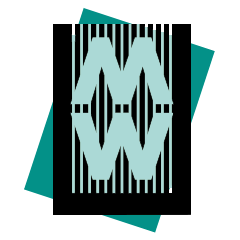GLAMi nomination: Victorian Microscope Slides Interactive Touchscreen
institution: San Diego Natural History Museum
category: Exhibition Media or Experience
http://www.sdnhm.org/exhibitions/current-exhibitions/extraordinary-ideas/
In August 2016, the San Diego Natural History Museum (theNAT) opened the Eleanor and Jerome Navarra Special Collections Gallery, a new permanent space dedicated to showcasing the holdings of its research library and rare book room. The core exhibition of the new space, “Extraordinary Ideas from Ordinary People: A History of Citizen Science,” uses library collections to highlight the role of amateur naturalists in the history of science. One of the displays features a selection of Victorian-era microscope slides. Amidst a craze for popular science in the late 19th century, microscopes became commercially available. Suddenly, anyone who could afford a microscope could be a citizen scientist, mounting specimens to glass slides or buying pre-made slides displaying everything imaginable—tiny pieces of plants, shells, insects, fossils, crystals. The decorative papers that commercial slide-makers used to fasten the glass plates over the specimens were often as compelling as the specimens. To replicate the experience of closely examining the natural and manmade details of Victorian microscope slides, theNAT created a touchscreen that allows visitors to zoom in on images of 27 slides from the Museum’s collection in extremely high resolution.
The touchscreen sits on a tabletop beside a vitrine housing a selection of real slides, a genuine Victorian microscope, and several period popular books about microscopy. Once a visitor activates the interactive, s/he is taken to a screen featuring a quote that reads: “The microscope sees an ocean in a drop and a world in a pinch of dust; and the eye at the lens will grow old before their marvels are exhausted.” The quote is taken from Reverend Edwin C. Bolles, a Massachusetts pastor, naturalist, and collector who assembled the Museum’s collection of about 1,800 microscope slides. The visitor is then taken to a home screen where s/he can explore 27 slides. Visitors can magnify the images, drag them around the screen, and get pop-up information about the meaning of the maker’s marks on the slides. The graphic design alludes to a Victorian decorative aesthetic, from a background image suggesting brocade wallpaper to the navigation arrows and “Home” icon. The specimens mounted in the slides are all identified in English and Spanish, as well as by Latin scientific name where possible.
Visitors explore the slides on a 32-inch Elo 3201L interactive digital signage touchscreen, mounted in landscape orientation at a 60-degree angle on a 30-inch-high tabletop to meet ADA accessibility standards. The large monitor allows for a pair or social group to experience the activity together; stools are available so that visitors have the option to be seated. The program runs on an Alienware X51 R3 computer secured in a custom-built housing that also serves as the mount for the screen. Consistent with the entire exhibition, all interpretation is offered in both English and Spanish.
Additional information (e.g. special considerations or additional context)
The exhibit team conducted user testing at multiple points during development of the interactive. This process informed all aspects of usability, particularly the ultimate design of the “zoom” feature. We learned that while most younger adults and youths intuitively touched the screen to magnify the image, and also used their fingers to pinch-and-zoom without prompting, many older adults did neither and needed to be cued. In response, we added two icons: a magnifier icon to indicate that an image can be enlarged, and an icon that mimes pinching-and-zooming the first time it appears, but then doesn’t appear again once the user has learnt this function.
Credits
Media production: Martin Baumgaertner, Thon Lorenz
Content: Margaret Dykens, Erica Kelly
Graphic design: Lydia D’Moch
Image digitization: Michael Field
Translation: Ana Martinez
Proofreading: Shelley Chung, Karen Levyszpiro, Claudio Luchina
Media housing fabrication: Kim Blackford
Project management: Beth Redmond-Jones, Bradley Tsalyuk








